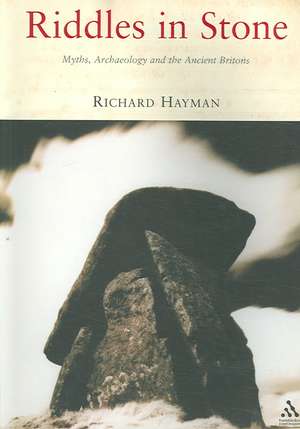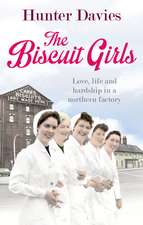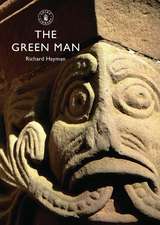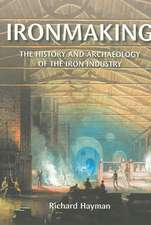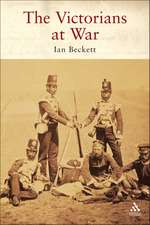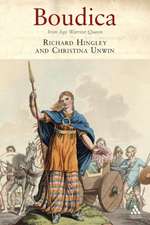Riddles in Stone: Myths, Archaeology and the Ancient Britons
Autor Richard Haymanen Limba Engleză Paperback – 14 noi 2006
Who built Avebury and Stonehenge? Why and when were more than 600 stone circles, and thousands of barrows and cairns, erected in prehistoric Britain? What were they used for and what do they tell us about the beliefs and culture of their builders? Riddles in Stone is a history of the extraordinary variety of answers that have been given to these questions, by amateurs and professionals, archaeologists and astronomers, mystics and systems theorists.
While modern excavation and radiocarbon dating has undoubtedly advanced our knowledge of the sequence and date of the monuments, their purpose and meaning is still hotly debated. Indeed no previous century has changed its mind so often as the twentieth - or provided such a welter of differing opinions. Each theory has as much to say about its own time as it has about prehistory. The stones have been used to enhance the authority of the Bible, to endorse the civilizing mission of the British Empire - and to argue that the Ancient Britons could work a computer. In a reaction to modern industrial society, they have been credited with spiritual powers and natural energies.
Even the views of modern archaeologists often seem to reflect the latest academic fad, rather than a lasting solution. Riddles in Stone is an entertaining and instructive account of a debate on a subject of endless fascination.
Even the views of modern archaeologists often seem to reflect the latest academic fad, rather than a lasting solution. Riddles in Stone is an entertaining and instructive account of a debate on a subject of endless fascination.
Preț: 395.72 lei
Preț vechi: 615.23 lei
-36% Nou
Puncte Express: 594
Preț estimativ în valută:
75.72€ • 79.06$ • 62.67£
75.72€ • 79.06$ • 62.67£
Carte tipărită la comandă
Livrare economică 04-18 aprilie
Preluare comenzi: 021 569.72.76
Specificații
ISBN-13: 9781852855666
ISBN-10: 1852855665
Pagini: 332
Ilustrații: 1
Dimensiuni: 156 x 234 x 18 mm
Greutate: 0.67 kg
Editura: Bloomsbury Publishing
Colecția Hambledon Continuum
Locul publicării:London, United Kingdom
ISBN-10: 1852855665
Pagini: 332
Ilustrații: 1
Dimensiuni: 156 x 234 x 18 mm
Greutate: 0.67 kg
Editura: Bloomsbury Publishing
Colecția Hambledon Continuum
Locul publicării:London, United Kingdom
Caracteristici
Richard Hayman's study covers a great deal of ground without relinquishing readability. It traces the interpretation of material remains, from pagan mythology to Baconian science, from Romanticism to modern archaeology. It discusses competing theories, including the notion that Stonehenge was a 'Neolithic computer'. A genuinely appealing book, sure to fire the imagination of a wide range of readers. 'No stone is left unturned'.
Cuprins
Illustrations
Illustration Acknowledgements
Preface
1 Monuments in the Landscape
2 Pagan Traditions
3 The Church and the Devil
4 In Medieval Literature
5 The Wonder of Britain
6 John Aubrey and Friends
7 William Stukeley
8 William Borlase
9 Romantic Druids and the Picturesque
10 Richard Colt Hoare and William Cunnington
11 The Barrow Diggers
12 Stone Age Circles and Stone Age Man
13 Diffusionism
14 Megalith Builders
15 Beaker Folk
16 Stonehenge and the Wessex Culture
17 The Sun and the Stars
18 Sir Norman Lockyer and his Followers
19 Stonehenge Decoded
20 Pi and Pythagorean Thoughts
21 Alfred Watkins and the Old Straight Track
22 John Michell and The View over Atlantis
23 Mysterious Britain
24 Earth Mysteries
25 Radiocarbon and other Revolutions
26 Sex and the Dead
27 Landscape, Culture, Society
28 Epilogue
Gazetteer
Notes
Bibliography
Index
Illustration Acknowledgements
Preface
1 Monuments in the Landscape
2 Pagan Traditions
3 The Church and the Devil
4 In Medieval Literature
5 The Wonder of Britain
6 John Aubrey and Friends
7 William Stukeley
8 William Borlase
9 Romantic Druids and the Picturesque
10 Richard Colt Hoare and William Cunnington
11 The Barrow Diggers
12 Stone Age Circles and Stone Age Man
13 Diffusionism
14 Megalith Builders
15 Beaker Folk
16 Stonehenge and the Wessex Culture
17 The Sun and the Stars
18 Sir Norman Lockyer and his Followers
19 Stonehenge Decoded
20 Pi and Pythagorean Thoughts
21 Alfred Watkins and the Old Straight Track
22 John Michell and The View over Atlantis
23 Mysterious Britain
24 Earth Mysteries
25 Radiocarbon and other Revolutions
26 Sex and the Dead
27 Landscape, Culture, Society
28 Epilogue
Gazetteer
Notes
Bibliography
Index
